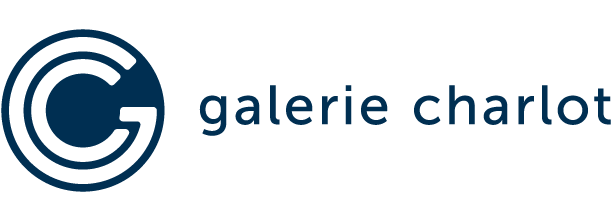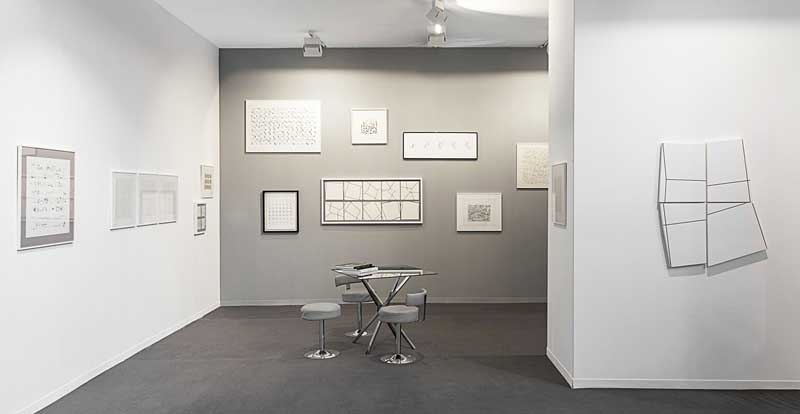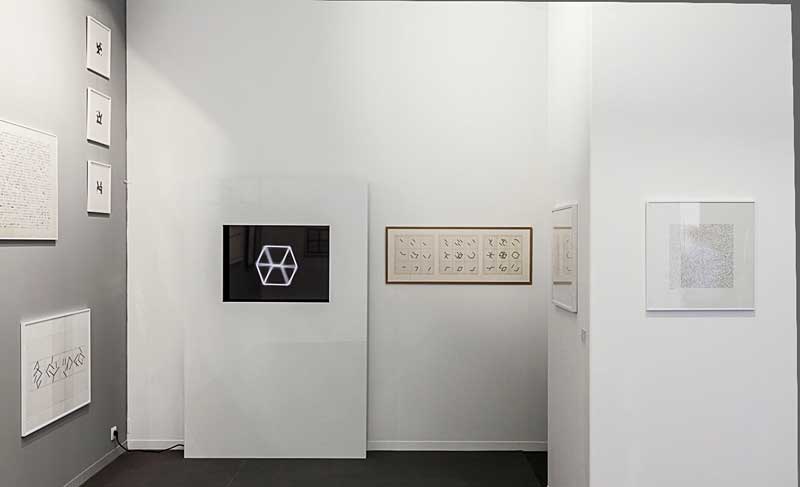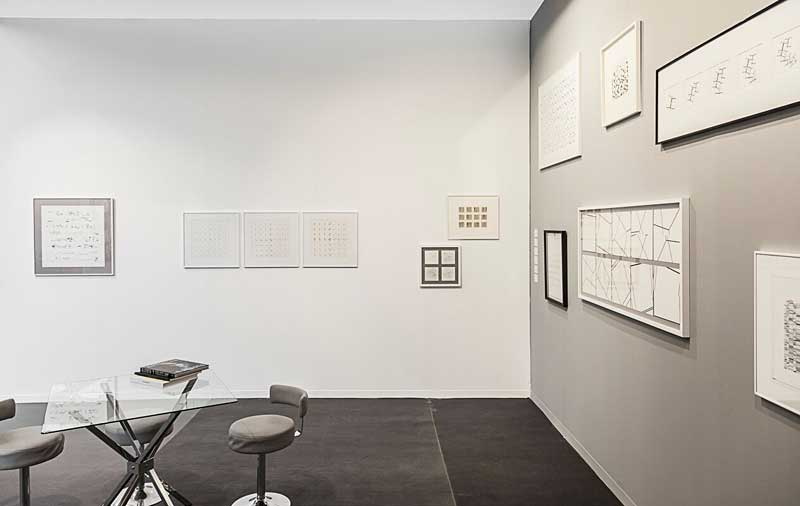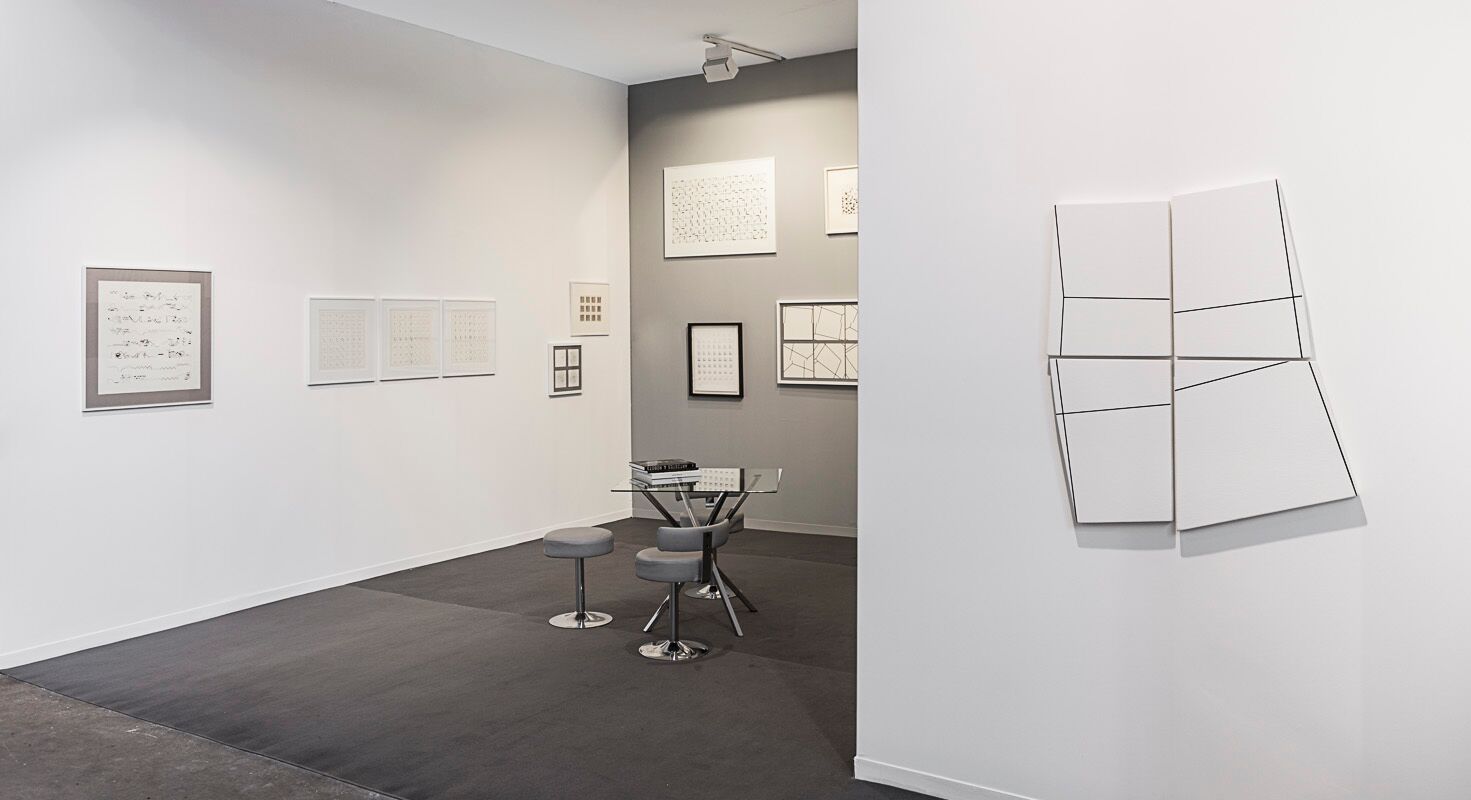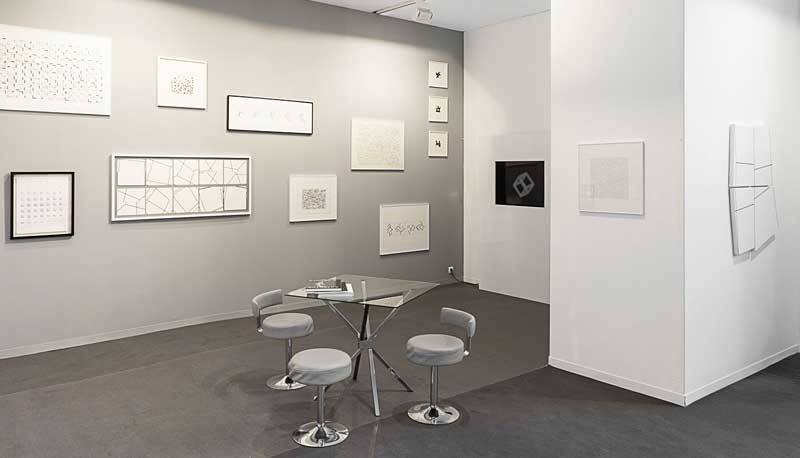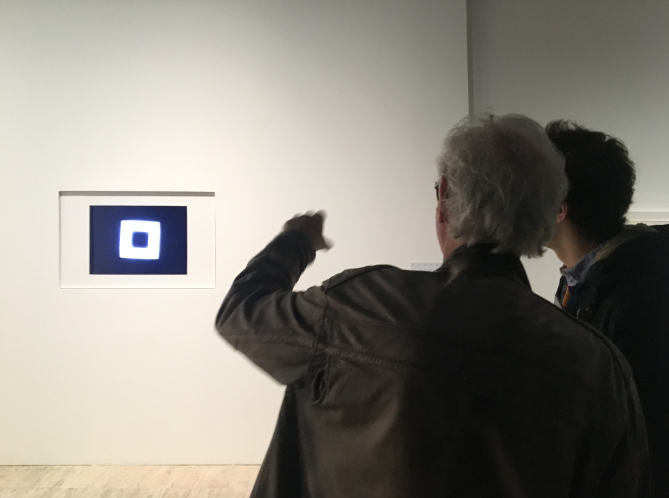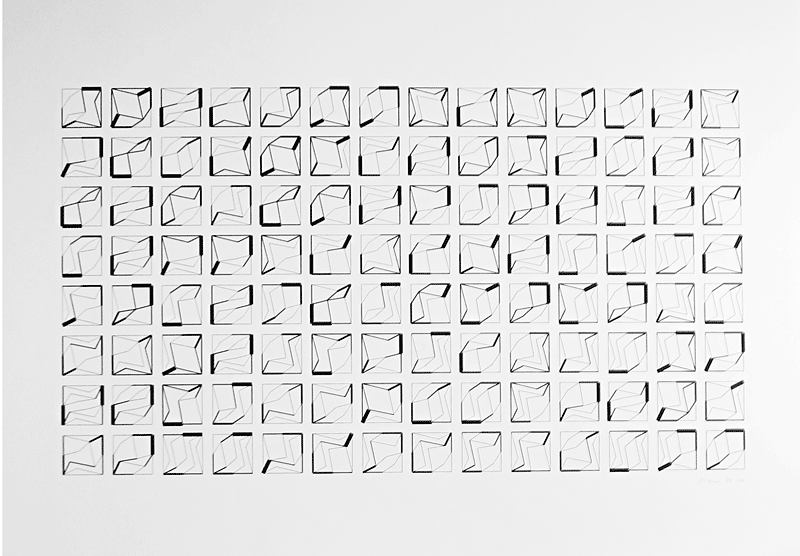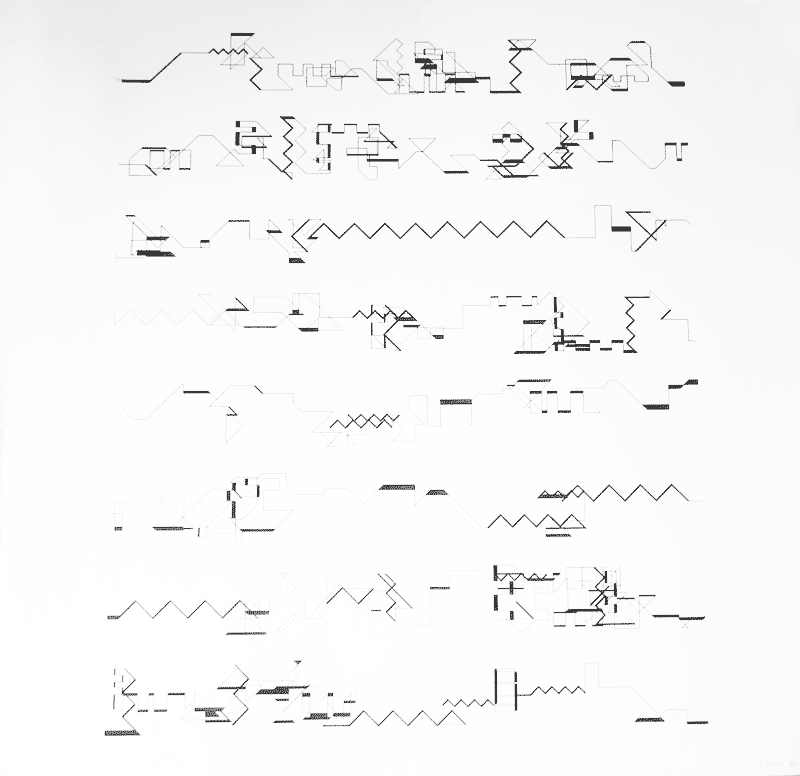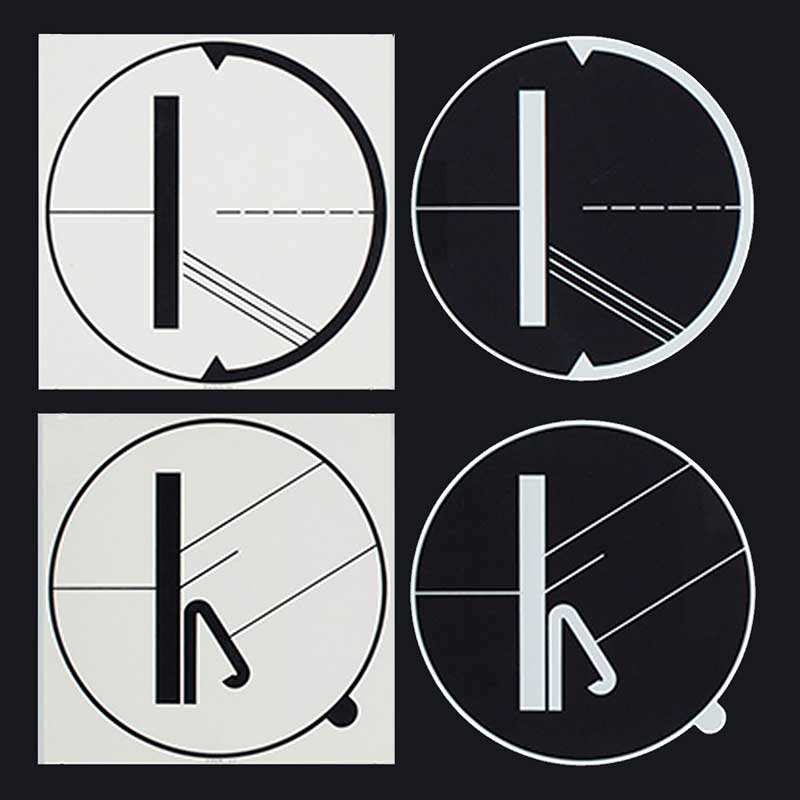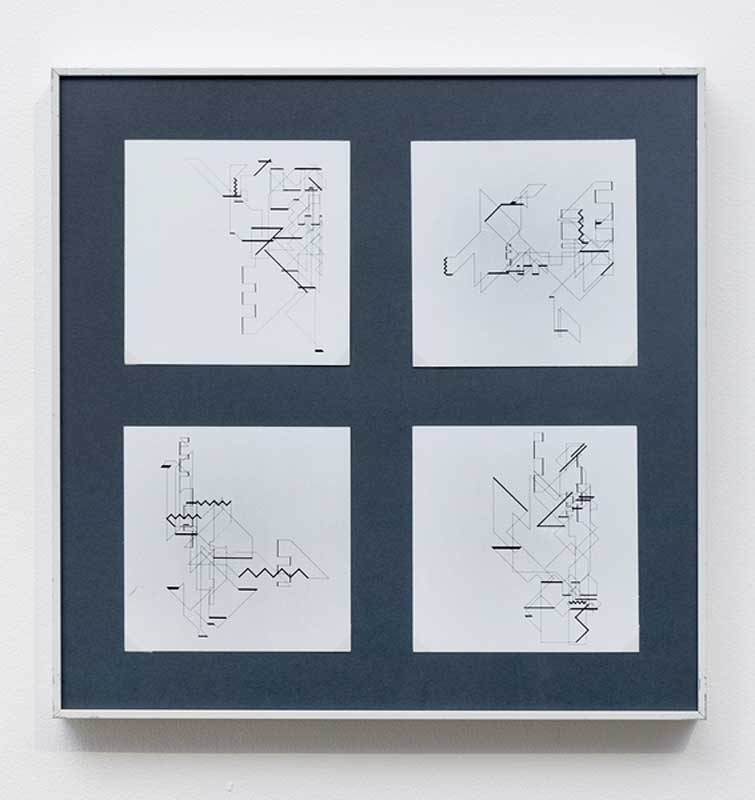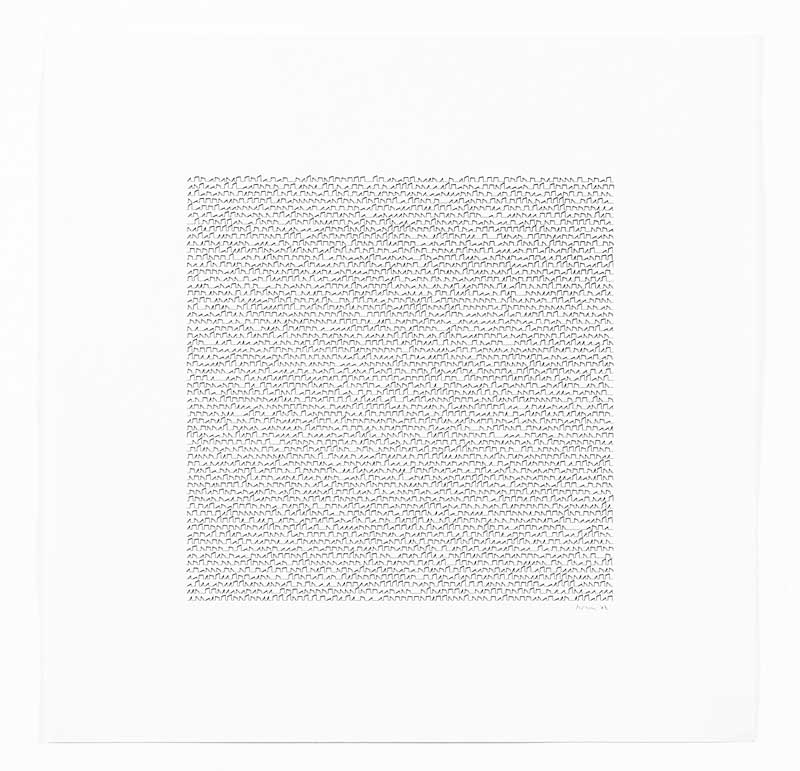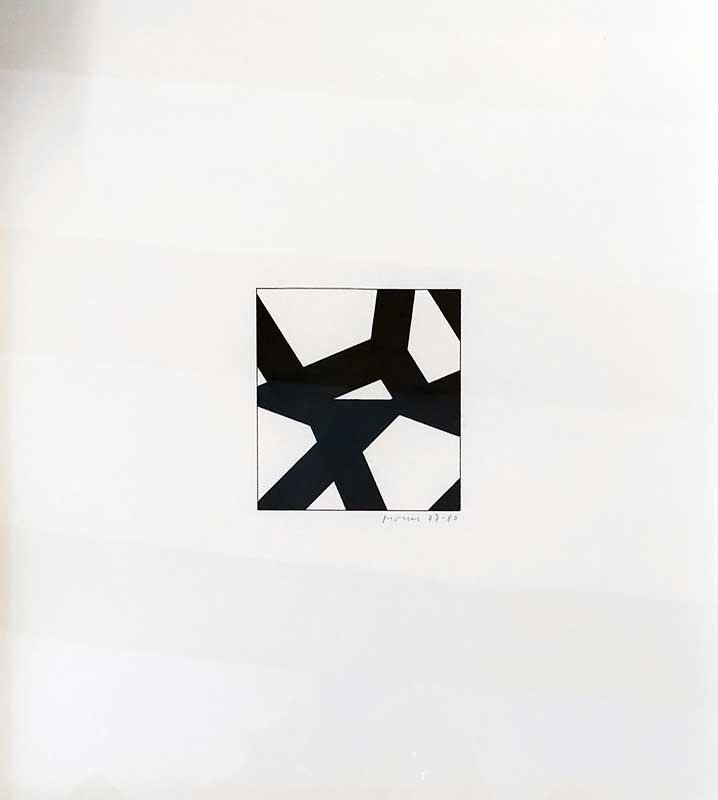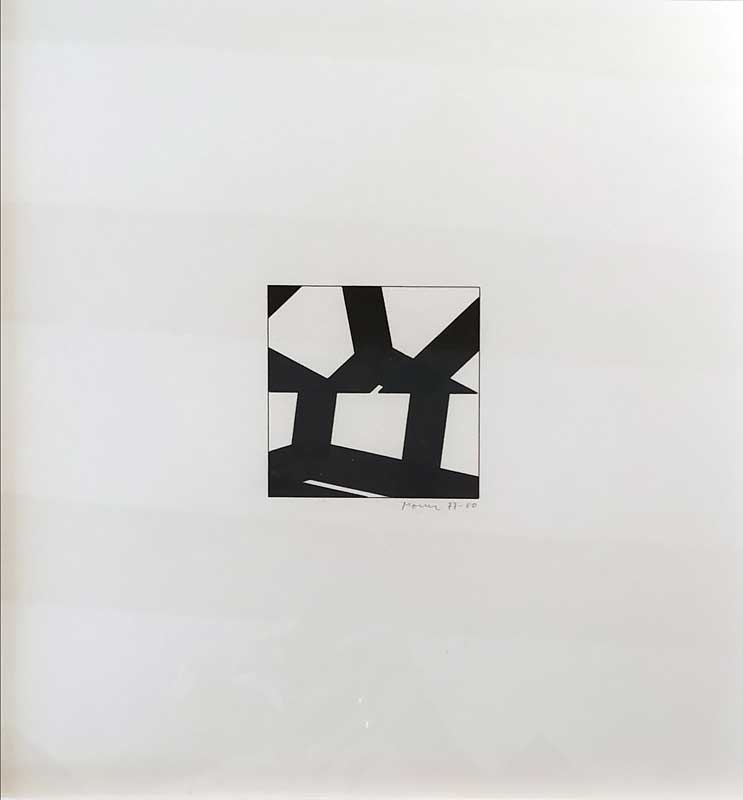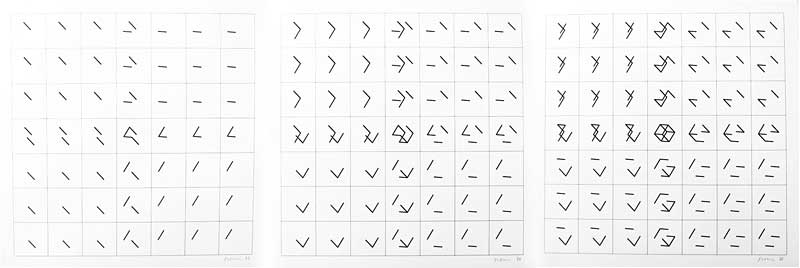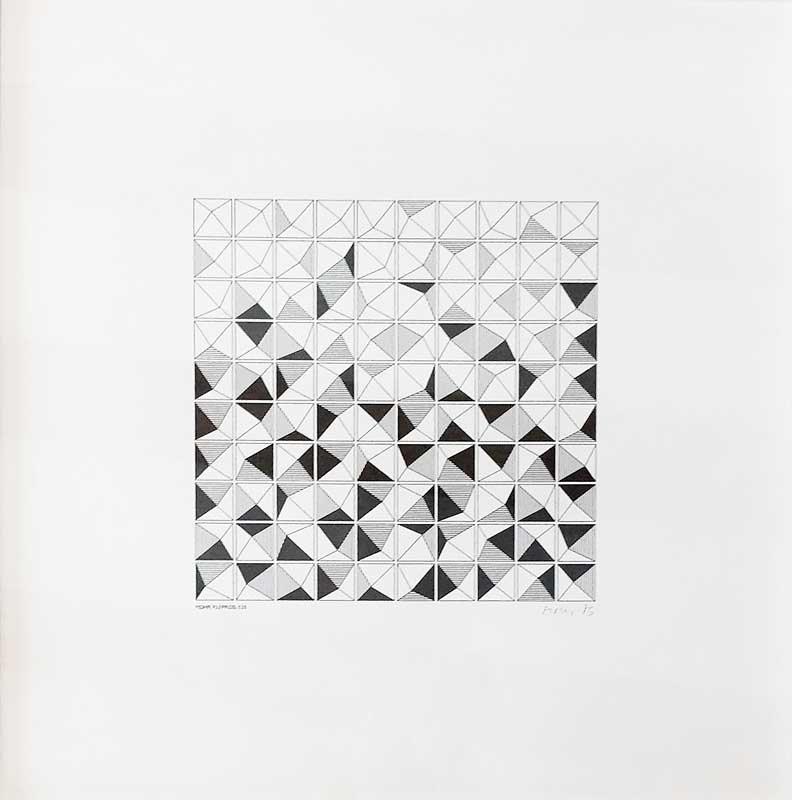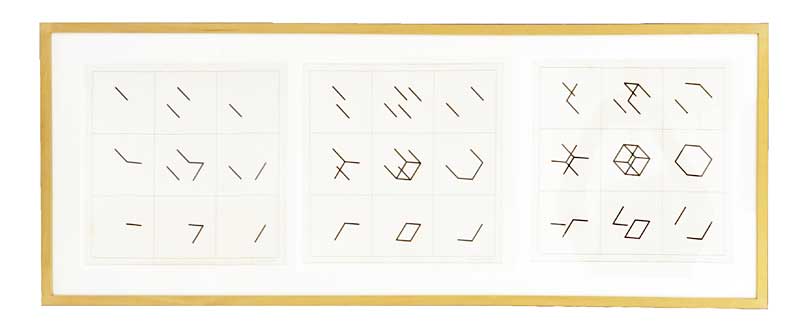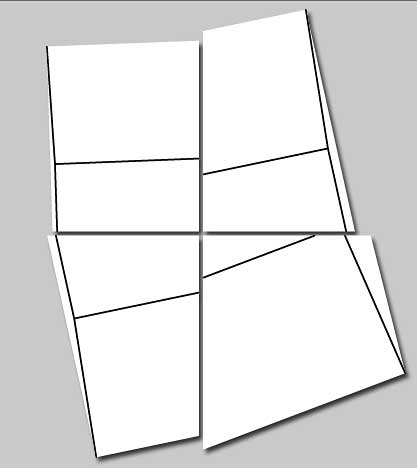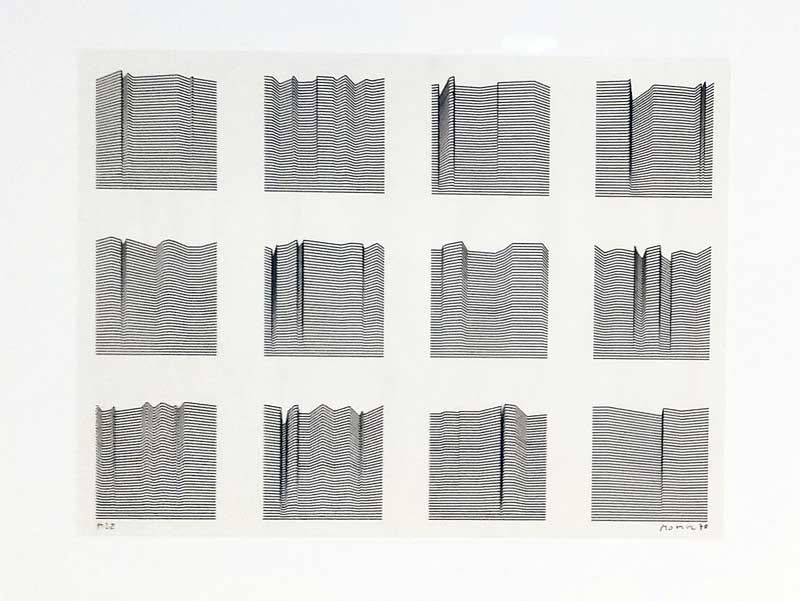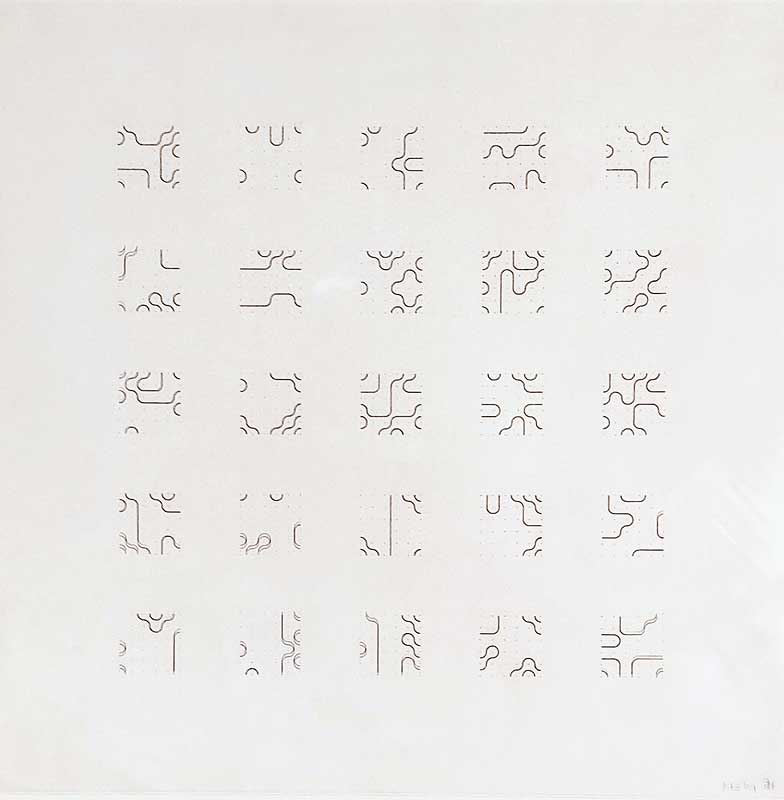Galerie Charlot @ Art Brussels
04/25/2019
Rediscovery Sector with a solo show of Manfred Mohr works. 25-28 April 2019, Tour & Taxis, Brussels //// Manfred Mohr is considered a pioneer of digital art. After discovering Prof. Max Bense's "information aesthetics" in the early 1960's, Mohr's artistic thinking was radically changed. Within a few years, his art transformed from abstract expressionism to computer generated algorithmic geometry. Encouraged by the computer music composer Pierre Barbaud, Mohr programmed his first computer drawings in 1969. For the first time algorithms (rules with a beginning and an ending) are used to calculate the images, rendered visible through computer programs the artist wrote. The resulting drawings were realised by a computer controlled drawing machine (plotter). With a choice of different line characteristics, an alphabet of arbitrary generated elements is created. Individual algorithms are invented for each work from which all forms and structures are solely generated. Some of the artworks showed on the booth were part of his first solo show « Esthétique programmée » at ARC - Musée d'Art Moderne de la Ville de Paris in 1971, now widely acknowledged as one the first museum solo shows of digital art. In 1972, he introduces the cube as a fixed system with which signs are generated. In the first part of this work phase, an alphabet of signs is created from the twelve lines of a cube. In some works, statistics and rotation are used in the algorithm to generate signs. In others, combinatorial, logical and additive operators generate the global and local structures of the images. In the second part of this work phase, cubes are divided into two parts by one of the Cartesian planes. For each image the two partitions contain independent rotations of a cube. By rotating both parts of these cubes in small but different increments, long sequences of images are developed. In the last few years Manfred Mohr work have been featured in exhibitions such as « Electronic Superhighway », at Whitechapel Gallery London, in 2016; « Artists and Robots » at the Grand Palais, Paris, in 2018; « Coder le Monde » at the Centre Pompidou, Paris in 2018 and « Programmed: Rules, Codes and Choreographies in art » at Whitney Museum NY, 2019, to name a few.
Artists
- + Manfred Mohr (represented by Galerie Charlot)
Press
- + 04/25/2019 | Manfred Mohr - Art Brussels 2019
by Armelle Malvoisin, Le Quotidien de l'Art - + 04/11/2019 | Art Brussels ouvre l'oeil
Beaux-Arts Magazine
